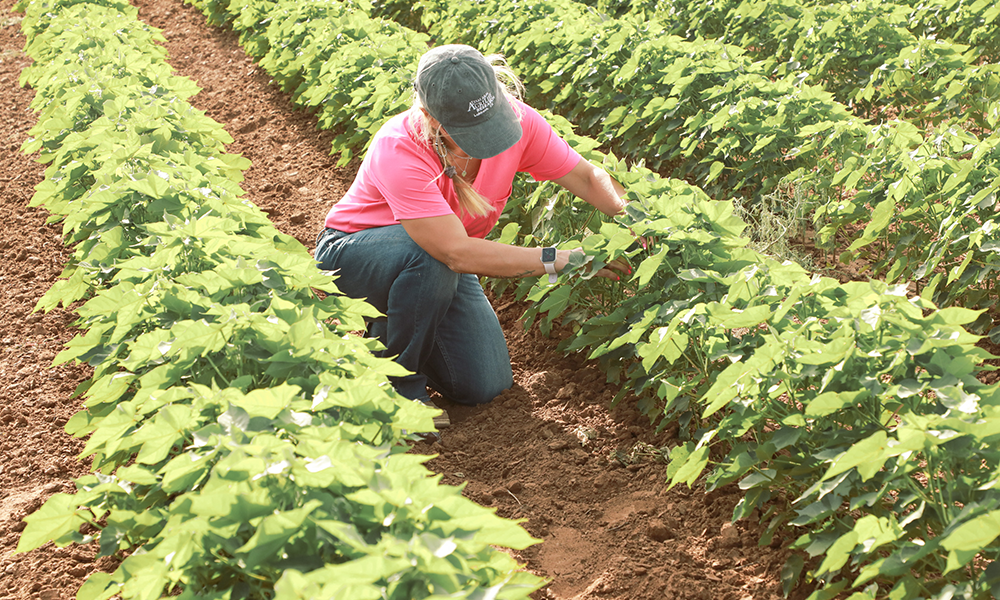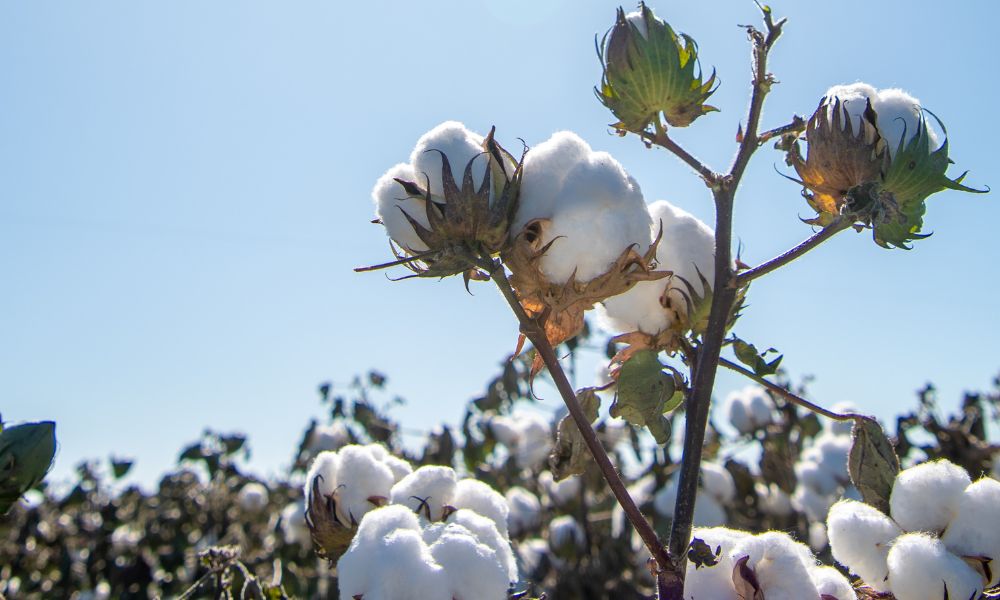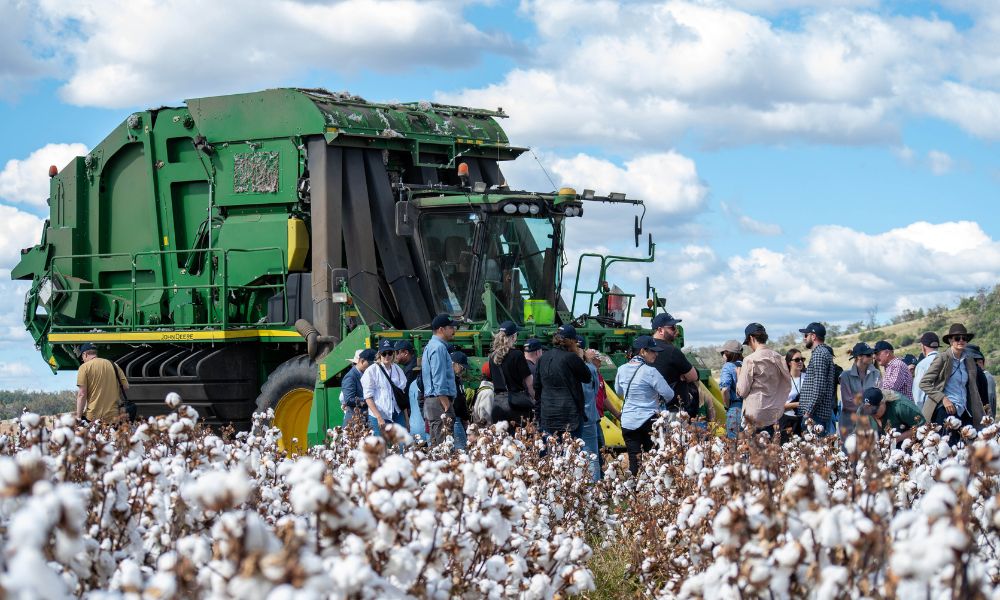U.S. Cotton’s Strides in Land Use and Soil Conservancy
June 30, 2022
A new Cotton LEADS℠ webpage offers insights into best practices and research in land use efficiency, soil conservation and soil health.
U.S. cotton yields have doubled over the last 40 years, even as less land has been planted. Producing 1 pound of cotton lint requires 30% less land today than it did in 1980, according to Field to Market’s 2021 National Indicators Report. Technological advances in production and management make this efficiency possible, but a farm value stretching back generations lies at its heart: stewarding the land.
As every grower knows, when you steward the land well, you increase yield, reduce production costs, and create a better future for your farm and your family. Today, land stewardship often focuses on soil conservation to limit erosion while increasing soil health and land use efficiency, and all these practices play an important role contributing to environmental sustainability.
Soil Conservation & Soil Health Benefits
The U.S. cotton industry’s big gains in land use efficiency and soil erosion between 1980 and 2000 can be attributed to widespread use of high-impact soil conservation practices including conservation tillage, and cover crops. Soil conservation works hand-in-hand with soil health and crop production, because the more nutrients and organic matter in the soil, the less likely it is to erode and the more likely it is to produce healthy crops.
Healthy soil also improves crop yield, helps reduce plant stress during short-term drought or pest attacks, and reduces the need for fertilizer inputs. Increasing soil carbon, often referred to as regenerative agriculture, is also seen by many organizations as a key strategy to reducing atmospheric greenhouse gases (GHGs) that contribute to climate change.
To learn more about how soil conservation practices transformed the U.S. cotton industry, visit our Land & Soil webpage.
Soil Health Practices & Research
U.S. cotton’s soil health gains have slowed since the early 2000s, which parallels the now-slower rate of adoption of those practices. The U.S. cotton industry is supporting various research projects to improve understanding of soil health, best practices and how to continue advancing grower adoption of these high-impact practices:
Conservation tillage: reducing the number of times soil is plowed, preserving crop residue that breaks down into organic matter in the soil. Seed treatment fungicides, herbicides and herbicide-tolerant cotton that emerged in the late 1990s have enabled growers to control diseases and weeds without tilling.
Cover crops: planting non-cotton crops to hold soil in place during winter. Following the same principles as conservation tillage, cover crop stalks and leaves degrade into the soil, where they contribute to soil carbon accumulation.

Conservation tillage vs. conventional tillage: the difference in the soil is clear.
Visit our Land & Soil webpage to learn more about soil health practices and on-going research directly transferrable to farmers and practitioners.
Land Use Efficiency’s Role in Sustainability
Land use efficiency means that smaller areas of land are required to produce the same or greater amount of cotton. U.S. farmers and researchers have long been leaders in increasing cotton land use efficiency, and the industry has set a 10-year goal to improve land use efficiency by 13%.
Land use efficiency is used as a standard sustainability indicator because it influences and is influenced by all the resources involved in growing crops: soil, water, pesticides, fertilizers and even energy. For example, practices like these also contribute to increasing land use efficiency:
- Implementing highly uniform water delivery systems or irrigation scheduling tools to reduce the amount of water per pound of cotton
- Improving soil health through crop rotation, no-till practices, and the planting of cover crops
- Choosing cotton varieties that are more resilient to pests, drought, etc.
Find out about how the U.S. cotton industry measures land-use efficiency and the latest research contributing to improving it at our Land & Soil webpage.
For decades, the U.S. cotton industry achieved huge strides in land use and soil health. These achievements affected not just crop yields and productivity but also the environment and the world economy. Considering their broad reach, U.S. growers, researchers and industry organizations are taking the necessary steps to ensure land use and soil health improvements continue in order to maximize productivity today and steward the land for the future.
The work we do is possible because of collaborations with researchers like these and partnerships with people all throughout the value chain. Ready to commit to sustainably produced cotton? Become a Cotton LEADS℠ partner today. Interested in doing even more? Contact us for ideas to get the most out of sustainable cotton and your partnership with Cotton LEADS.














Recent Comments